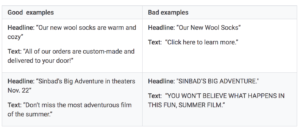5 Google Ads Campaign Tips for 2021
Is your 2021 resolution to improve your Google Ads campaigns and increase your overall business profitability? As marketers, it’s important to maintain control over our strategies and campaigns. Google’s optimizations are not always in the best interests of our business, they also don’t exactly know the context of our brands. To succeed in the upcoming year, we must try new things and change our strategies and tactics. We have to integrate more data, retain control over automatic Google optimizations and fight against increased competition.
Here are 5 things to do and focus on in 2021 to improve your Google Ads campaigns.
1. Have keyword intent.
Google always favors consistency with campaigns. The more similar performance your keywords have, usually the better the campaign will perform overall. When selecting keywords, user intent should be the top priority around which we group our keywords.
Users who have searched for the name of your brand are obviously more likely to convert once they make it to your website. So, any keywords relating to your brand should be grouped together since they bring the best CPA and ROAS. Any keywords mentioning “price” or “discount” are strong signals of purchasing intent as well. Phrases including “specifications,” “size” or “warranty” are important to bid on, but CTR and CR are likely to be lower, so you want to reduce your bid.
If you want to improve results, it’s important to visualize and quantify areas in which you can improve things and find new business. The trick is to structure your account appropriately. This can be a tedious and complicated process, but there are a number of tools that can assist you.
2. Declutter your campaigns.
Keeping a close eye on all aspects of your campaigns can seem overwhelming, yet it can be key to success. Any underperforming spend represents the portion of your Google Ads investment that either has a low quality score or isn’t converting enough. To reduce waste spend, it’s important to focus on two Google reports: Quality Score and Search Query Report. This will help you analyze the search terms that trigger your ads and identify where to increase and decrease spend.
3. Identify and double down on your strengths.
It’s a common misconception that bidding on new keywords automatically leads to increasing sales. While this is sometimes true, it’s more effective to make sure you have the maximum market share on the keywords that are your most profitable, beyond just branded traffic.
The best way to ensure you don’t miss out on any opportunity is to monitor your impression share on Google Ad SEPRs. Lost impressions relate to missed opportunities on searches related to the keywords you bid on. Best practice includes focusing on your top 10 campaigns and checking the market shares of your competitors, monitoring closely when you’re not shown and identifying why that might be.
4. Use high quality creatives.
Ad copy and visuals obviously play a huge role in your campaigns. Users are exposed to more than 6000 ads daily, so standing out and grabbing attention is essential. The quality of creative weighs up to 80% in the performance of Facebook Ads campaigns and the case is similar for Google Ads. Optimizing ads and creatives includes giving in to statistics. It’s impossible to know for sure which creatives will perform best without testing multiple versions. It’s also important to continuously test ads. Even when you identify a clear winner in one test, create new versions to continue to test to ensure you’re always increasing your ad performance.
5. Spend smarter, not more.
Spend should be allocated not only on keywords or placement levels, but user profiles also need to be taken into account. Data is gathered from users’ declarative info, when and where they’re active online, as well as Google Analytics shared data and inferred data from previous search queries. It’s important to take these user profiles into consideration and make bid adjustments to your most valuable audiences and criteria.
More from Onimod Global
At Onimod Global we’re experts in all areas of Google Ads. If you’re looking for digital marketing assistance, we can help your business reach its full digital potential. Interested in growing digital presence for your company? Reach out to us here!
Onimod Global releases the latest digital marketing news and essential marketing tips every Tuesday and Thursday! To catch up on the top digital marketing news and trends, click here. To find out more about who we are and what we do, click here.



